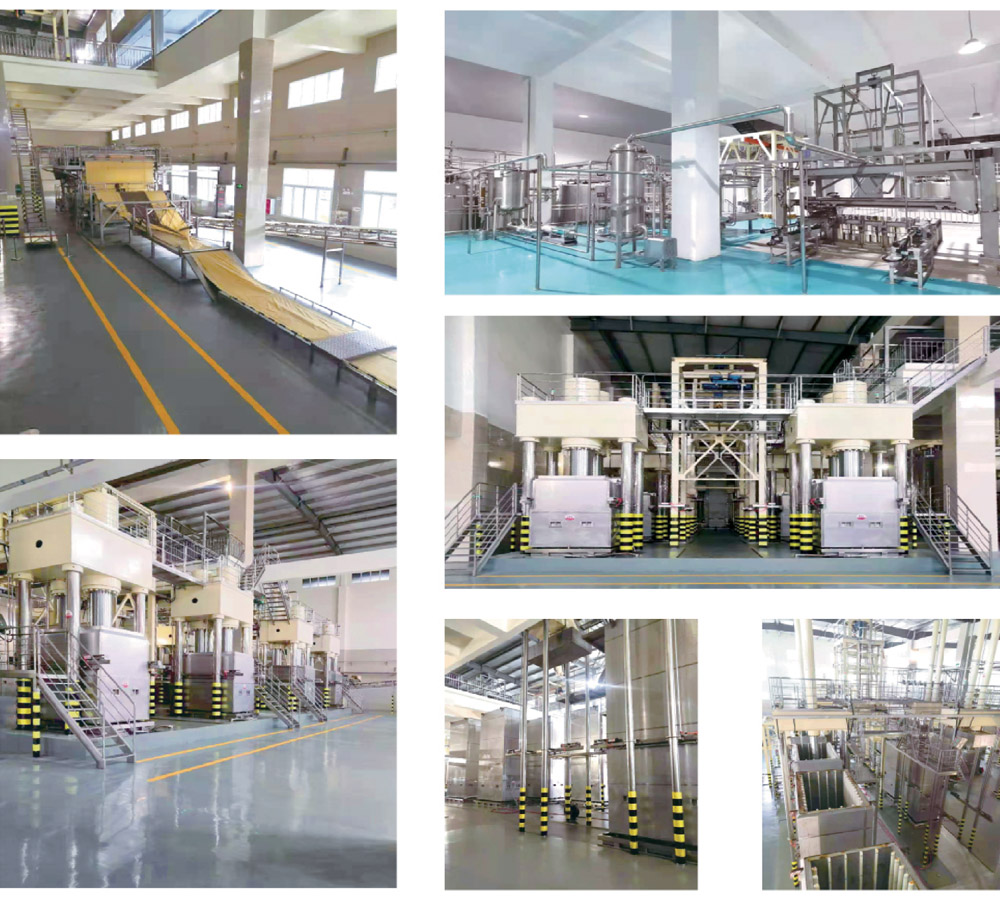Fried Instant Noodle Production Line
- yutong
Deep frying is the process of placing quantitatively cut dough into a frying box, and through a high-temperature oil bath, the water in the dough quickly vaporizes, forming a porous structure in the noodles and further gelatinizing the starch.

The frying function of the instant noodle production line:
(1) Completely gelatinize starch;
(2) Dehydration;
(3) Fixed shape.
Specific operation: Control the transmission speed of the frying box to control the frying time. Control the front temperature, middle temperature, and back temperature of the fryer to ensure the frying effect. These are mainly achieved by adjusting the oil flow rate.
The factors that affect the frying effect of instant noodle production lines:
(1) Frying temperature
The oil temperature is too low, and the dough cannot be fried thoroughly; If the temperature is too high, the dough will explode and burn. Deep frying is divided into three stages: in the low-temperature zone, the dough absorbs heat, the temperature rises, and dehydration begins; Entering the medium temperature zone, the dough begins to dehydrate significantly, and oil seeps into the noodles; The water content in the high-temperature area is basically stable and no longer dehydrates. The temperature is similar to the oil temperature. This increases the gelatinization degree of starch and causes denaturation of protein thickness.
(2) Frying time
The frying time is also an important factor affecting the frying effect. It interacts with oil temperature. If the moisture content in the dough is determined and the oil temperature is low, the frying time will be longer; High oil temperature and short frying time. The frying time is too short, and the dough is not dehydrated thoroughly, making it difficult to store; If the time is too long, the dough will bubble and fry, affecting the quality of the pastry and increasing the cost.
(3) Oil level
If the oil level is too low, the dough will dehydrate slowly, which may result in incomplete frying and fuel consumption; High oil level, increased circulation, and susceptibility to sourness. The unstable oil level has an impact on the gelatinization degree of the dough and the oil content of the product.
(4) Oil quality
The content of saturated fatty acids in fats is low, and oils are prone to rancidity. Products not only consume more oil, but are also prone to rancidity. Good quality oil not only saves fuel, but also produces high-quality fried dough. Palm oil with a melting point of 26-30 ℃ is generally used.
In addition, fuel consumption and the properties of the dough itself can also have an impact on the frying effect.